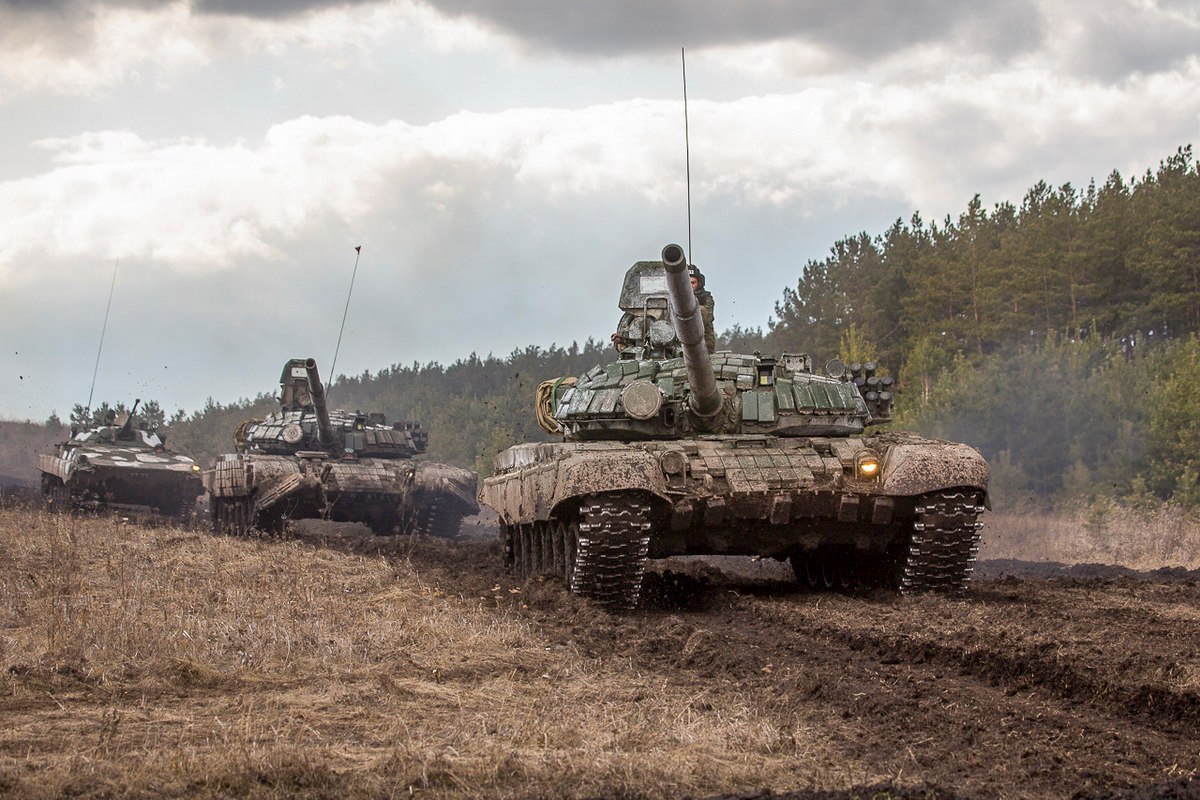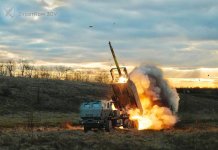A new video released recently shows a Russian T-72 B3 tank knocking down an anti-tank rocket. The T-72 B3 tank’s defense system or Arena-M detected the incoming rocket and launched an interceptor munition, destroying the rocket before it could make contact with the tank.
APS Enabled Russian Armata Tanks High On Agenda During Modi-Putin Meeting In Russia
Arena-M is an active protection system (APS) that provides a ‘shield’ against incoming anti-tank rockets and missiles.
In the demonstration video by the Russian portal One Russia, a Russian Ground Forces soldier is shown firing an RPG-7 anti-tank grenade at a Russian T-72B3 main battle tank. Using its Arena-M or APS, the tank neutralized the RPG round by blasting it off in mid-air.
https://www.youtube.com/watch?v=RJEgPVCCHd4&t=1502s
The relatively new anti-missile technology or APS “ushers in a new era of warfare where rockets against tanks might become a thing of the past”.
The Arena-M hard-kill active protection system on modern T-72B3 tanks allows Russia to continue using older tanks to ensure they remain competitive on modern battlefields. This system further avoids overburdening the older tanks with new armor.
Indian Air Force Shows Its Prowess With ‘Swarm Drone Technology’; Tweets Images: Watch
How Does APS Work?
Based on a ‘pre-emptive strike’ mechanism, the APS strikes down the enemy target before the target does. The new system makes use of ‘doppler’ radar to detect incoming projectiles and directs the launcher onboard the tank to intercept the incoming target.
The tank or armored vehicle has several millimeter-wave radars. Each radar is pointed outward and assigned to different areas of the external frame of the tank.
Watch A Giant 3D Cat Atop A Tokyo Train Station Catches Commuters By Surprise
“If the radars pick up an incoming rocket or missile, they track the target and determine if it’s on a collision course with the vehicle. If it is, the APS automatically launches an interceptor munition that pops out of an armored silo located on the tank and terminates the threat,” Defense writer Kyle Mizokami told Popular Mechanics.
Anti-Tank Technology
The APS is designated to neutralize the threat from shaped charge warheads, which are a ‘headache’ for tank crews. ‘Shaped charges’ are high-explosive anti-tank warheads.
These warheads are small and lightweight and can be launched from rockets such as the American AT-4 rocket or the Russian RPG series. Highly effective, they can even be placed on hand grenades and anti-tank mines.
Why China’s New Refueler Y-20 Sends Ominous Signals To India & Others In The Indo-Pacific?
Moreover, experts are of the view the interceptor munitions are similar to shotgun rounds. The APS-launched interceptor munitions send an explosive blast in the direction of the incoming rocket, which makes the system unpleasant to be around, as reported by Wonderful Engineering.

Even, the APS does not discriminate between friendly and hostile targets and engages both of them.
Improved anti-tank missile technology poses a challenge to the old and vulnerable tanks that are made to become heavier by adding layers of metal, thereby affecting their mobility.
The history of the APS can be traced to the times of the arms race between the US and the USSR during the Cold War period. In a bid to counter any anti-tank weapon attack by the US, the Soviet Union came up with the APS.
T-72 B3 Tank
The APS on the T-72B3 tank serves as the first layer of defense against anti-tank munitions such as the American Tube-Launched, Optically-Tracked, Wire-Guided (TOW) anti-tank missile.
India’s Latest Agni-P Ballistic Missile Sparks A Fierce Debate Between Chinese & Indian Experts
The T-72B3 is a third-generation main battle tank (MBT), which features an advanced fire controls system and new thermal sights. It is smaller than the foreign models, which makes it less vulnerable, according to The National Interest.
The tank, which was first introduced in 2010, was a part of the family of Soviet MBTs that entered production in 1971.
Written by Kanika Sachdeva
Read More




